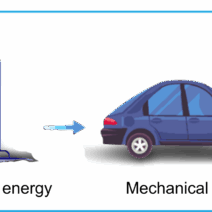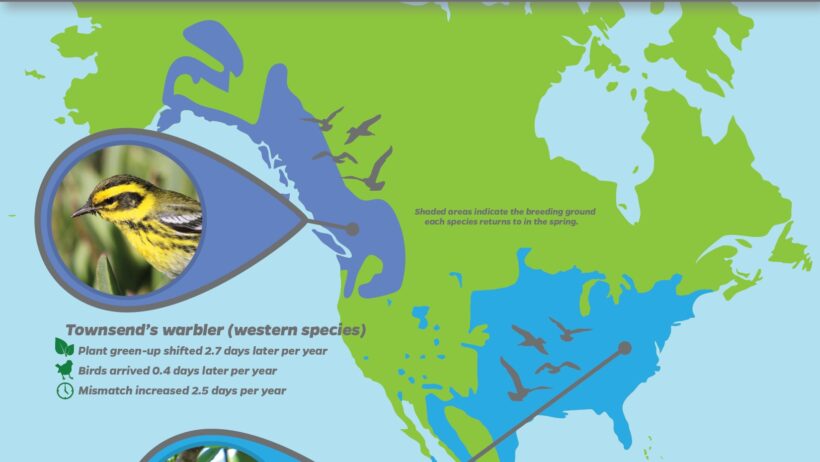The Peregrine Falcon, a stunning avian predator renowned for its breathtaking speed and hunting prowess, finds itself at a crossroads as global temperatures rise. Climate change is instigating profound alterations in ecosystems, and avian species, especially raptors like the Peregrine Falcon, are experiencing significant repercussions. As habitats shift, prey availability and migratory patterns transform, the delicate balance of these ecosystems is threatened. Understanding the intricacies of how climate change impacts Peregrine Falcons can illuminate broader environmental shifts, thereby inviting both curiosity and concern.
The Peregrine Falcon, a member of the Falconidae family, is famously dubbed the fastest bird on Earth, capable of reaching speeds exceeding 240 miles per hour during its characteristic hunting stoop. This remarkable ability positions the species at the apex of the avian food chain, where it preys on smaller birds. However, as temperatures rise, climate change disrupts the habitats essential to both the Peregrine Falcon and its prey. With shifts in geographical ranges and altered breeding seasons, the dynamics of these prey populations can fluctuate, leaving the falcon’s traditional hunting strategies ineffective.
Increased average temperatures can lead to a cascading effect within ecosystems. For instance, warmer winters may prompt prey species, such as various songbirds, to migrate earlier or later than usual. This phenomenon can create a misalignment between the breeding times of Peregrine Falcons and peak food availability. If falcons do not adapt to these shifts, they may find themselves breeding at suboptimal times, resulting in decreased reproductive success. The consequences are not merely numerical; they can have cascading impacts on the population dynamics of these formidable hunters.
In addition to the temporal shifts in prey availability, habitat changes induced by climate change present another challenge. As vegetation zones migrate in response to rising temperatures, the natural environments that support Peregrine Falcons and their prey are also affected. Coastal habitats may be particularly vulnerable, as rising sea levels and increased storm severity threaten traditional nesting sites. Peregrine Falcons prefer cliff faces and urban structures for nesting, and if these habitats are compromised, the ramifications for breeding success can be dire.
The interplay between anthropogenic factors and climate change compounds the issues facing Peregrine Falcons. Urbanization and habitat degradation—often spurred by the same climate-related pressures—add layers of complexity to their survival challenge. In urban environments, Peregrine Falcons have adapted remarkably well, nesting on skyscrapers and feeding on pigeons. However, as urban heat islands intensify, the increased temperature can impact prey behavior and abundance, further heightening competition among avian predators.
The importance of Peregrine Falcons extends beyond their role as predators; they are also indicators of environmental health. The presence of robust peregrine populations often suggests a stable ecosystem, whereas declines may signal environmental distress. As such, understanding how climate change affects their habitats and food sources is critical for broader ecological monitoring. Engaging in conservation efforts and habitat restoration can then serve dual purposes, benefitting both falcons and the surrounding ecosystem.
Moreover, the impact of climate change on Peregrine Falcons is emblematic of larger trends affecting raptor species globally. Other birds of prey, such as eagles and hawks, confront similar challenges associated with temperature increases and shifting ecosystems. As apex predators, raptors are intrinsically linked with the overall health of their environment. A decline in raptor populations can indicate a breakdown in ecological balance, prompting further investigation into the ripple effects on various species and environments.
One could argue that the story of the Peregrine Falcon amid climate change serves as a focal point for broader discussions on wildlife conservation and ecological resilience. As interest in biodiversity conservation grows, educators and activists can utilize the plight of these birds to galvanize public interest and action. Informing individuals about the unique challenges faced by Peregrine Falcons invites them to ponder the interconnectedness of species within a changing climate.
Solutions to combat the challenges posed by climate change on Peregrine Falcons include habitat restoration, sustainable urban planning, and policy advocacy. Protecting existing nesting sites and creating new ones are vital steps towards ensuring their long-term survival. Additionally, embracing adaptive management practices can help wildlife agencies respond proactively to changing conditions. Engaging local communities in conservation efforts can create a collective responsibility that benefits both Peregrine Falcons and their ecosystems.
In conclusion, the Peregrine Falcon stands as a powerful symbol of nature’s resilience and fragility. Climate change poses an intricate web of challenges, threatening this iconic avian predator’s very existence. Understanding the ramifications of global warming on Peregrine Falcons encourages a shift in our perspective, piquing curiosity about the interconnectedness of species and their habitats. Advocating for informed and proactive measures reveals the potential for positive change, highlighting the essential role each individual plays in safeguarding our planet’s avian inhabitants. The survival of the Peregrine Falcon is not merely a matter of conservation; it is a testament to the delicate balance that sustains life on Earth.






